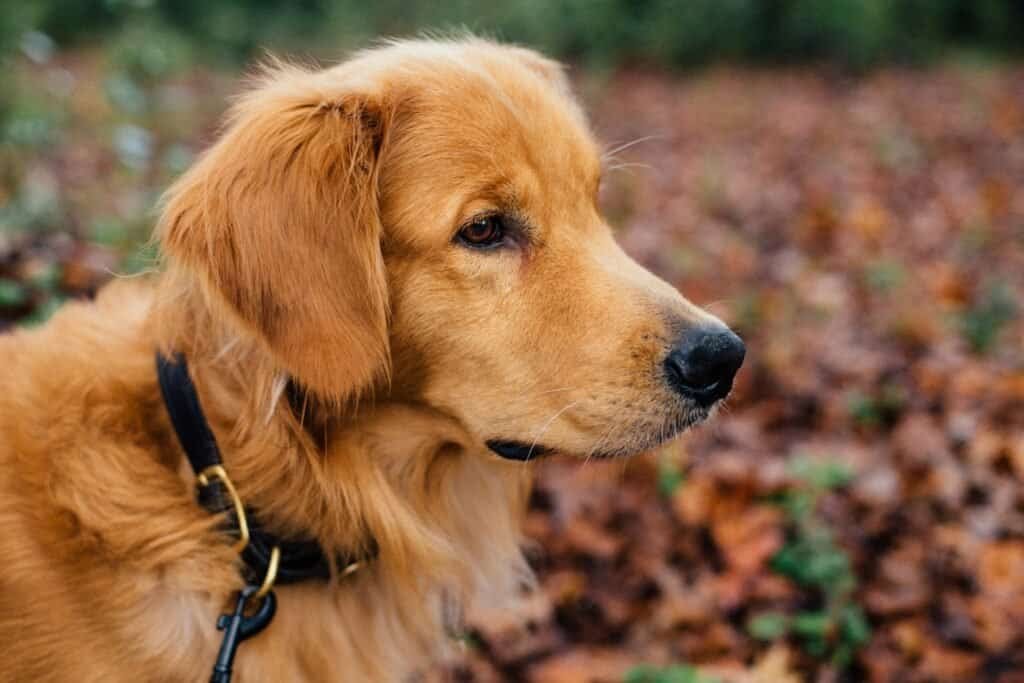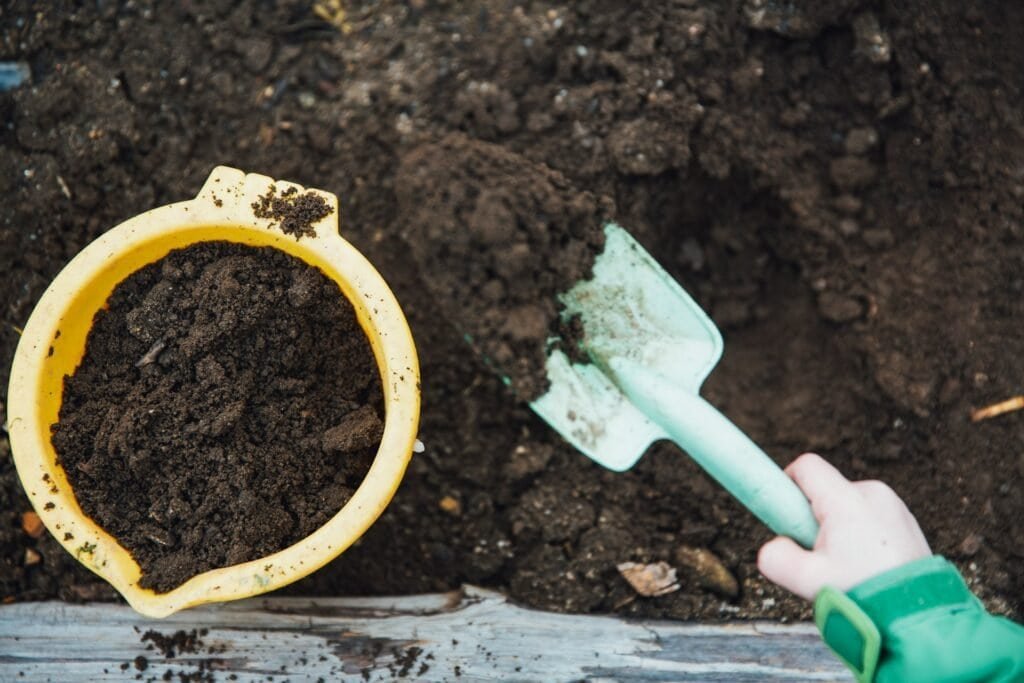Composting is an age-old method of recycling organic materials into nutrient-rich soil, and when it comes to managing your pet’s waste, composting dog poop is a viable option. With the right knowledge and tools, you can convert dog waste into compost suitable for non-edible and ornamental plants, thereby reducing your environmental footprint. However, unlike food scraps and yard waste, dog poop requires specific handling due to pathogens that can be harmful to humans.
The Basics of Dog Poop Composting
Composting dog waste is a specific process requiring attention to detail. The process involves creating an environment where microorganisms can break down dog poop into compost that is both safe and beneficial for the soil. This is achieved when the compost pile reaches a high enough temperature to kill harmful pathogens. Maintaining these conditions is essential to ensure a successful transformation of waste into compost.
While the basics of composting dog poop are similar to regular composting, there are key differences. For example, compost containing dog waste should never be used on edible plants due to the risk of contamination. Instead, this type of compost is best suited for ornamental plants. The success of composting dog poop hinges on proper balance, regular maintenance, and understanding the unique requirements of this composting process.
Why Is Dog Poop an Environmental Concern?
Pet waste, particularly dog waste, is not just a nuisance but also an environmental concern. If it ends up in a landfill, it contributes to methane emissions, a potent greenhouse gas. Moreover, if not disposed of properly, it can decompose naturally in ways that pollute waterways and harm ecosystems. Leigh Ackland, a professor at Deakin University, emphasizes the importance of managing pet waste responsibly to avoid these environmental impacts.
Aside from environmental implications, dog waste carries potential health risks to humans and animals. Pathogens present in the waste can contribute to disease transmission. Therefore, it’s crucial to manage pet waste in a manner that reduces these risks. Safely composting dog waste at home under the right conditions can be a part of this responsible management, turning a problem into an opportunity for creating beneficial compost.

Step-by-Step Guide to Composting Canine Waste
Composting dog waste begins with collecting and preparing the waste properly. This includes using certified home compostable or compostable poo bags that are designed to biodegrade in compost. Once gathered, the dog waste should be mixed with carbon-rich materials such as sawdust or dry leaves to create a balanced compost mix. Throughout the process, it’s helpful to monitor the compost’s temperature with a long-stemmed thermometer and to add materials like grass clippings to maintain the right moisture and carbon levels.
Selecting a Suitable Compost Bin
Choosing the right compost bin is crucial for effective composting of dog waste. It should be a dedicated bin, separate from your regular compost to prevent cross-contamination. The size and type of the compost bin will depend on the amount of waste produced and the available space. It should also be sturdy and secure to deter pests and protect the composting material from the elements.
When selecting a compost bin for dog waste, consider one with proper aeration and easy access for adding waste and turning the compost. This will ensure that the composting process remains aerobic, reducing odors and promoting faster decomposition. A well-chosen bin is the foundation of successful composting, leading to a healthier garden and environment.
Gathering and Preparing the Dog Waste
The first step in composting dog waste is to gather it regularly and ensure that it is not mixed with other types of waste. For eco-conscious dog owners, certified home compostable poo bags are the perfect choice for collection, as they biodegrade in compost and reduce plastic use. Once collected, the dog waste should be deposited in the compost bin and mixed with carbon-rich materials to kickstart the composting process.
The recipe for a balanced compost mix includes a combination of green and brown materials. Green materials, such as grass clippings, provide nitrogen, while brown materials, like sawdust, add carbon. This mix helps to create the ideal conditions for microorganisms to thrive and break down the waste. A long-stemmed thermometer can be used to regularly check the temperature of the pile, ensuring it reaches the necessary levels to break down pathogens effectively.
Adding the Right Carbon Sources
The composting process depends heavily on maintaining the right balance between green waste, which provides nitrogen, and brown waste, which contributes levels of carbon. Dog owners engaging in composting should ensure they have an adequate supply of carbon-rich materials, such as dry leaves, straw, or shredded paper, to mix with the nitrogen-rich dog waste. This balance is crucial for creating an environment where decomposition can occur efficiently and without unpleasant odors.
For the composting process to work effectively, it’s not just about adding carbon sources, but also about the ratio in which they are added. An excess of nitrogen can lead to a smelly compost pile, whereas too much carbon can slow down the composting process. Dog owners should aim for a carbon-to-nitrogen ratio of about 30:1 for optimal results. Regularly adding the right carbon sources keeps the process on track and ensures a successful outcome.
Monitoring Compost Conditions
Keeping an eye on your compost’s conditions is key to successful decomposition. Temperature checks are vital, as the compost pile needs to reach a certain temperature to break down pathogens in dog waste. The Natural Resources Conservation Service recommends that the compost maintain a temperature between 130-150°F for at least three consecutive days to effectively kill off harmful organisms. Regular turning of the compost ensures even decomposition and aeration, helping to maintain these crucial temperatures.
Regular turning not only aids in temperature management but also introduces oxygen, which is essential for aerobic decomposition. Without sufficient oxygen, the composting process can become anaerobic, leading to increased odors and a slower rate of decomposition. By monitoring and managing the conditions within the compost bin, you can ensure the creation of safe, nutrient-rich compost suitable for ornamental plants in your garden.
The Pros and Cons of Dog Poop Composting
Composting dog poop has its pros and cons. On the positive side, it reduces landfill waste and recycles nutrients back into the soil. However, it requires careful management to mitigate health risks and may not be suitable for all gardens, especially those used for growing edibles. The decision to compost dog poop should be weighed with these factors in mind.
Pros
– Reduces environmental impact by turning pet waste into compost.
– Produces valuable soil amendments for ornamental plants.
– Lessens the burden on landfills.
– Supports a circular economy by turning waste into a resource.
– Offers cost savings by eliminating the need for commercial fertilizers.
Cons:
– Potential health risks if not handled properly due to pathogens in dog waste.
– Requires time and effort to maintain a separate composting system for dog waste.
– Compost should not be used on food crops or in areas where children and pets play.
– Limited application to non-edible plants, reducing versatility.
– Requires vigilance in monitoring and maintaining the right composting conditions.
Special Considerations and Safety Measures
When composting dog poop, special considerations and safety measures must be taken to ensure a healthy and safe environment. It is essential to keep the compost bin secure to prevent children and pets from accessing it. Additionally, the finished compost should only be used on ornamental plants to avoid any risk of contamination of food sources or play areas.
Precautions should be taken to avoid direct contact with the compost, including wearing gloves and washing hands thoroughly after handling. By following these safety measures, the risks associated with composting dog poop can be minimized, making it a more practical and environmentally friendly option for waste management.
Health Risks and How to Mitigate Them
Composting dog waste carries inherent health risks due to the potential presence of pathogens such as E. coli, Salmonella, and parasites. To mitigate these risks, it’s essential to maintain high temperatures within the compost pile, as this will help to kill off harmful microorganisms. It’s also important to practice good hygiene, such as using gloves when handling compost and washing hands afterward.
Furthermore, dog waste should never be added to compost that will be used on edible plants, as this could lead to contamination and possible illness. Instead, the finished compost should be reserved for non-edible plants, ensuring a safe distance from any areas where food is grown or where children and pets play. By adhering to these precautions, the health risks associated with composting dog waste can be significantly reduced.
Utilization of Finished Compost
Once the composting process is complete, typically between 4-8 weeks, the finished product is a nutrient-rich material that can be beneficial for certain landscaping applications. The Natural Resources Conservation Service suggests using such organic waste compost cautiously. It’s vital to avoid applying it to edible gardens, as dog waste can contain pathogens. Instead, the finished compost can be used on ornamental plants or as a soil amendment for non-food-related landscaping, where it can enhance soil structure and fertility without posing risks to human health.
Before using the compost, ensure that it has fully matured, which is indicated by a reduction in volume, a crumbly texture, and an earthy smell. While it’s an excellent way to recycle organic waste, it’s important to remember that not all plants are suitable for dog waste compost, and it should never be used in areas where children play or food is grown.

Is Composting Dog Poop Safe and Practical?
Composting dog poop requires careful management to mitigate the risks of harmful bacteria. Traditional composting theory suggests that maintaining a compost pile reaches high temperatures, which can help neutralize pathogens found in dog waste. Compost bins designed for pet waste are a practical solution, often incorporating features to facilitate aeration and temperature control. However, compost containing dog waste should not be used on edible crops to avoid potential health risks.
For safe composting dog poop at home, one must be diligent in maintaining the system, ensuring that poop bags are suitable for composting and that the conditions within the compost bins remain optimal for breaking down waste. Always wash hands after handling dog waste, even if gloves are used, and monitor the compost to ensure it matures properly before use. Although composting systems for dog poop offer an eco-friendly waste solution, it demands commitment and proper handling to be both safe and practical.
Alternatives to Home Composting
For those unable to commit to the rigors of home composting, alternatives exist. Compostable vs. biodegradable dog poop bags are a popular choice, offering a more eco-friendly option compared to plastic bags. While biodegradable bags break down more quickly than plastic, compostable bags are designed to degrade within composting systems, turning waste into compost under the right conditions. However, these bags should still be disposed of properly, as they require specific conditions to break down effectively.
Professional composting services are another alternative, as they manage the composting process off-site. These services often accept pet waste, tackling the composting process on a larger scale with more controlled conditions. This option is convenient and assures the composting bin is managed by experts, mitigating health risks associated with DIY composting. For those seeking an easy and responsible way to dispose of dog poop, these services can be a viable solution.
Final Thoughts
Transforming pet waste into a valuable garden amendment is possible, but it requires patience and attention to safety. When quantities have been accumulated, a ratio of 2 parts carbon to 1 part dog waste is generally recommended to create a balanced compost. This process offers a responsible way to manage pet waste, reducing landfill contribution and promoting a greener environment.
However, it’s crucial to use the resulting compost wisely and restrict its application to appropriate areas in the garden. By understanding the proper techniques and safety measures, pet owners can effectively turn waste into a resource that contributes to the health of their non-edible landscapes, creating garden gold from an unexpected source.


